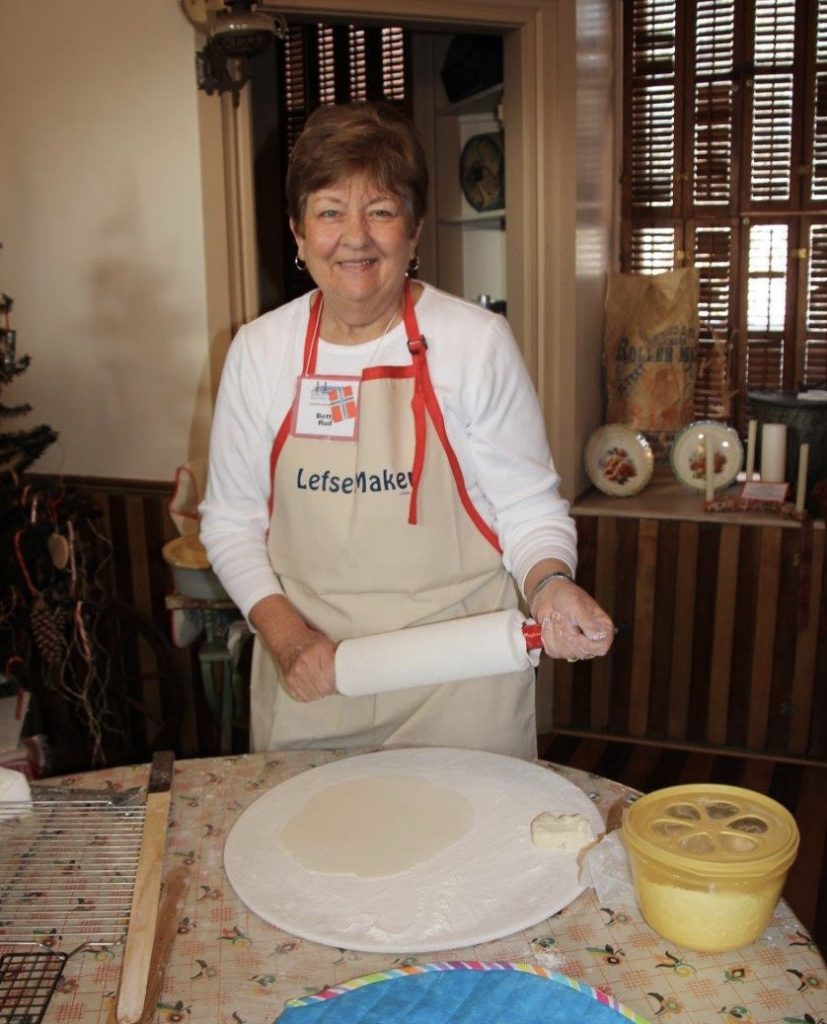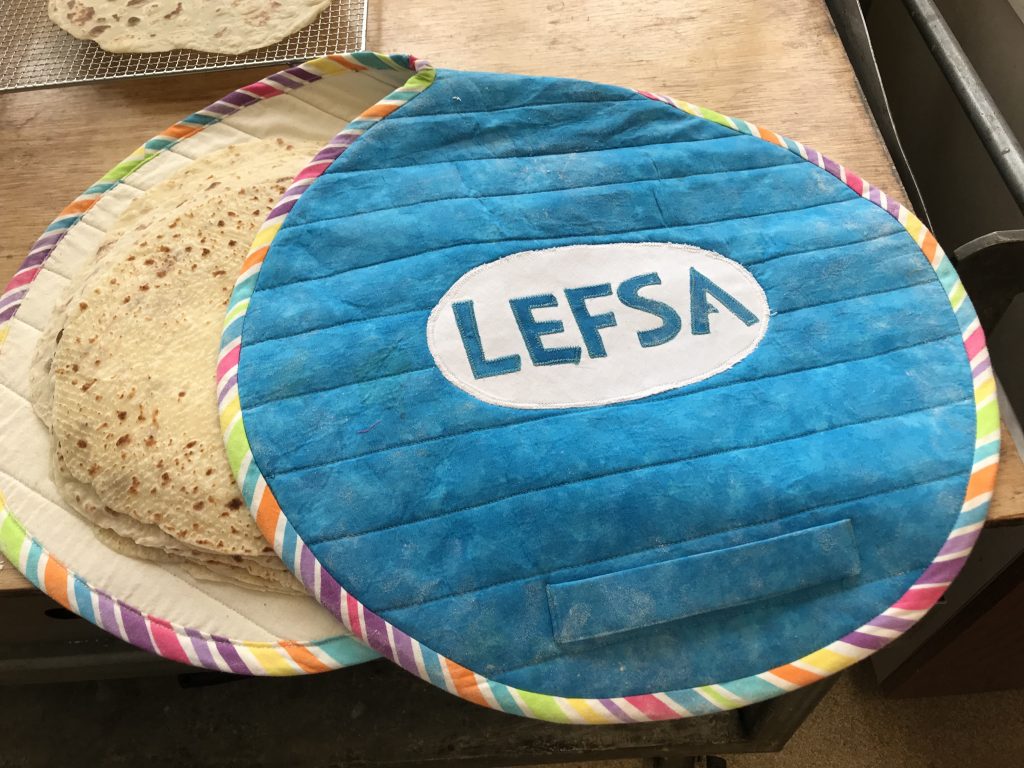
Gary’s note: I first met Betty at this year’s National Lefse Cook-off, which is part of Potato Days in Barnesville, Minnesota. Betty was a contestant who, while rolling round after round, said in a matter-of-fact way that folks in Arlington, Minnesota, “didn’t know what lefse was until I came to town.” Pretty impressive statement, so I asked Betty to write an explanation. Here it is.
I was raised in a Scandinavian home, a child of a mixed marriage. My father was of Norwegian heritage, and my mother’s roots were in Sweden. Lefse was always part of our Christmas dinners.
I helped make lefse a bit at home, but the recipe was so loose that one never knew how it would turn out. Leftover mashed potatoes and some other ingredients were combined, and then flour was added until it was “right.” Once I found a recipe with actual amounts of potatoes, butter, whipping cream, salt, sugar, and exactly the amount of flour necessary to make it “right,” it was much easier.
‘What’s Lefse?’
The first lefse I made was with leftover mashed potatoes from the restaurant where my husband worked in college. He brought the mashed potatoes home and we made use of them. He rolled the lefse, and I fried and flipped.
When we moved to Arlington, Minnesota, a little German community of 2,000, no one had heard of lefse. My Mother went to the local hardware store to buy a lefse griddle for Christmas. The storeowner’s reaction to her request: “What’s lefse?” The owner looked up the product and found the griddle could be ordered.
47-Year-Old Grill Still Works
So 47 years ago, I got my first griddle in Arlington. It’s had new electrical elements and cords, but I still use it. So I can say, Arlington had never heard of lefse until I moved to town—but now they know.
Lefse making gradually caught on in Arlington. One by one, the ladies of our church learned to make it. First, they learned to flip the rounds, and then make lefse dough from one special recipe. Finally, they learned to roll the rounds thin.
Now lefse making is an annual event. Each fall, we gather on a chosen day and make about 300 lefse, which we freeze three in a package until the Fall Bazaar. People have learned to enjoy it, and we never have trouble selling all the lefse.

Passing on the Tradition
I taught my three children how to make lefse. As my six grandchildren came along, they all learned there would be lefse with butter at every holiday meal. And to teach them how to make lefse, I would travel to each of their homes and bring all the equipment and lefse dough ready to roll. They put on aprons and they, too, started with easy tasks and advanced to rolling the rounds. I’m proud that my children and grandchildren have picked up the tradition of lefse making.
Last January, I was asked to demonstrate lefse making at the Sibley County Historical Society Open House. It was a pleasant afternoon and there were samples for all to taste. A few people made several stops to taste lefse again and again. My picture was in the local paper.
And last August, I entered the National Lefse Cook-off at the Potato Days in Barnesville, Minnesota. Although I didn’t win, it was a fun day and I found that there are many different methods to get a good piece of lefse. Maybe I’ll enter again next year.
